Enhancing Productivity through Evidence-Based Strategies

Enhancing Productivity through Evidence-Based Strategies
In a constantly evolving world, businesses have to keep up not only with the external environment but also the internal workforce dynamics. One key aspect that has recently gained significant attention post COVID is the role of productivity in the workplace. At INNoVA, we understand the importance of productivity to workplace dynamics, culture, and success. Some of the best strategies for fostering workplace productivity include building a diverse workforce, supporting employee mental health, and encouraging autonomy among employees. Continue reading to learn about evidence-based strategies to enhance workplace productivity.
1. Encourage Diversity in the Workplace
Encouraging diversity in the workplace is one way to increase workplace productivity. Studies suggest that diverse, inclusive, and accommodating workplaces have unmatched cultures with greater employee satisfaction and well-being (Saxena, 2014). The wide-ranging group of talented individuals created by workforces that are gender and ethnically diverse, and include individuals with diverse abilities and skillsets, are found to be more creative, better at problem solving, and producing a greater variety of solutions (Morgan, 1989 as cited in Saxena, 2014).
Increasing diversity begins with hiring practices. Be intentional in displaying your organization’s commitment to inclusion, diversity, equity, and accessibility by utilizing neutral and inclusive language in your job posting. Learn about creating accessible and diverse working models with INNoVA’s Strategic Inclusive Hiring Methodologies (SIHMs) service.
Beyond considering diversity and inclusion in the hiring process, it’s important to encourage diversity through inclusive workplace practices and activities to ensure employees feel valued, respected, and empowered. Some ways to encourage diversity in the workplace include:
- Promoting the use of common language among the employees. Sometimes company jargon can get confusing, ensure all employees are aware of and understand the use of common language and acronyms that are frequently used within the organization.
- Programing inclusion and diversity seminars. Encourage participation in programs that educate and promote diversity and inclusion in the workplace. Check out INNoVA’s Disability Confidence Training for your workplace!
- Hiring and promoting diverse candidates. It’s important to hire and promote individuals of ethnically and diverse backgrounds including persons with disabilities, in positions across the organization. Consider joining INNoVA’s Employment Strategy Exchange (ESX) to access and hire diverse talent.
2. Support Mental Health in the Workplace
Supporting mental health needs and encouraging business practices that increase positive mental health in the workplace is another way to enhance workplace productivity. Studies have shown there is a strong correlation between the presence of poor mental health and poor productivity (de Oliveira, Saka, Bone, et al., 2023). Employees who experience poor mental health are more likely to experience absenteeism or presenteeism. Absenteeism is unplanned absences from work, while presenteeism refers to the lost productivity that occurs when employees are at work but aren’t functioning at their fullest. In both cases, workplace productivity is negatively impacted.
To increase workplace productivity, introduce and encourage workplace policies that limit and help workers manage job stress. Initiatives that can help to reduce job stress include:
- Offering flexible hours. Offering employees some control over their work hours will allow them to flex their workday to avoid traffic, get a workout in, or shuttle children to or from school.
- Offering a hybrid approach. Offering employees an option to work from home can decrease stress by reducing time spent commuting and freeing up time to attend to personal obligations. Offering the choice to choose work envirnment also encourages autonomy.
- Supporting the use of paid time off. Employees may worry that taking time off will be frowned upon. If your organization offers paid time off, encourage employees to do so. It’s important to have a leadership driven approach – this means those in mangerial or leadership positions should also take time off, setting an example for the workplace!
- Providing resources and support. Gather local resources and activities that can be accessed easily by employees that can help to reduce stress and promote positive mental health, including group activity classes, local events, and healthy living videos or podcasts.
- Asking employees what they need. Workplace stress can be exacerbated by feeling underappreciated, distanced from management, and being unaware of potential supports. Approach employees about their needs first, rather than waiting for them to come to you.
3. Encourage Autonomy and Entrepreneurship in the Workplace
Some research suggests that increased perceived autonomy over work tasks can reduce work stress and significantly improve workplace productivity (Johannsen & Zak, 2020). Autonomy in the workplace refers to the notion that employees are encouraged to work towards a common goal in a way that best fits them. Shared workplace goals are usually set by management, however asking for input from all levels of employees and allowing individuals to set individual benchmarks encourages autonomy. Encouraging autonomy in the workplace increases workplace satisfaction and creativity, creates engagement and motivation, and promotes skill development, all of which contribute to building workplace productivity (Johannsen & Zak, 2020).
Initiatives that can increase autonomy in the workplace are similar to those that support the mental health needs of employees, including giving the choice of flexible work location and hours. Employers can further encourage autonomy of employees by asking for input on organizational goals and processes. Employees that are given autonomy are more likely to be motivated towards achieving shared organizational goals.
INNoVA’s Offerings
INNoVA’s best-in-class training is designed to empower you and your organization with the skills to diversify your workplace.
Employment Strategy Exchange (ESX)
Strategic Inclusive Hiring Methodologies (SIHMs)
For pricing, booking information, or to discuss custom training and consulting services for your organization, please contact us for more information.
Emma D’Andrea Brooks
Student Occupational Therapist
Join Our Newsletter
Join the INNoVA family! The best way to keep in touch and be informed on our hiring process.



